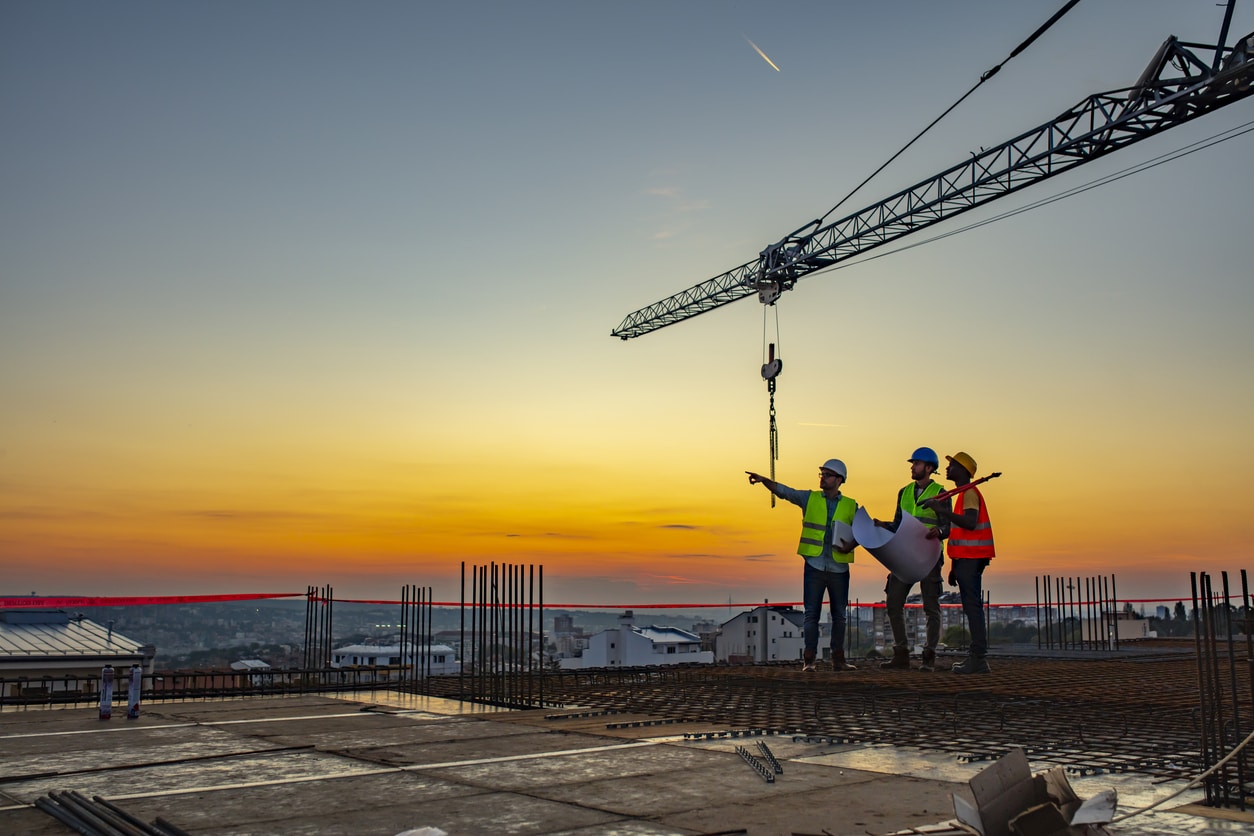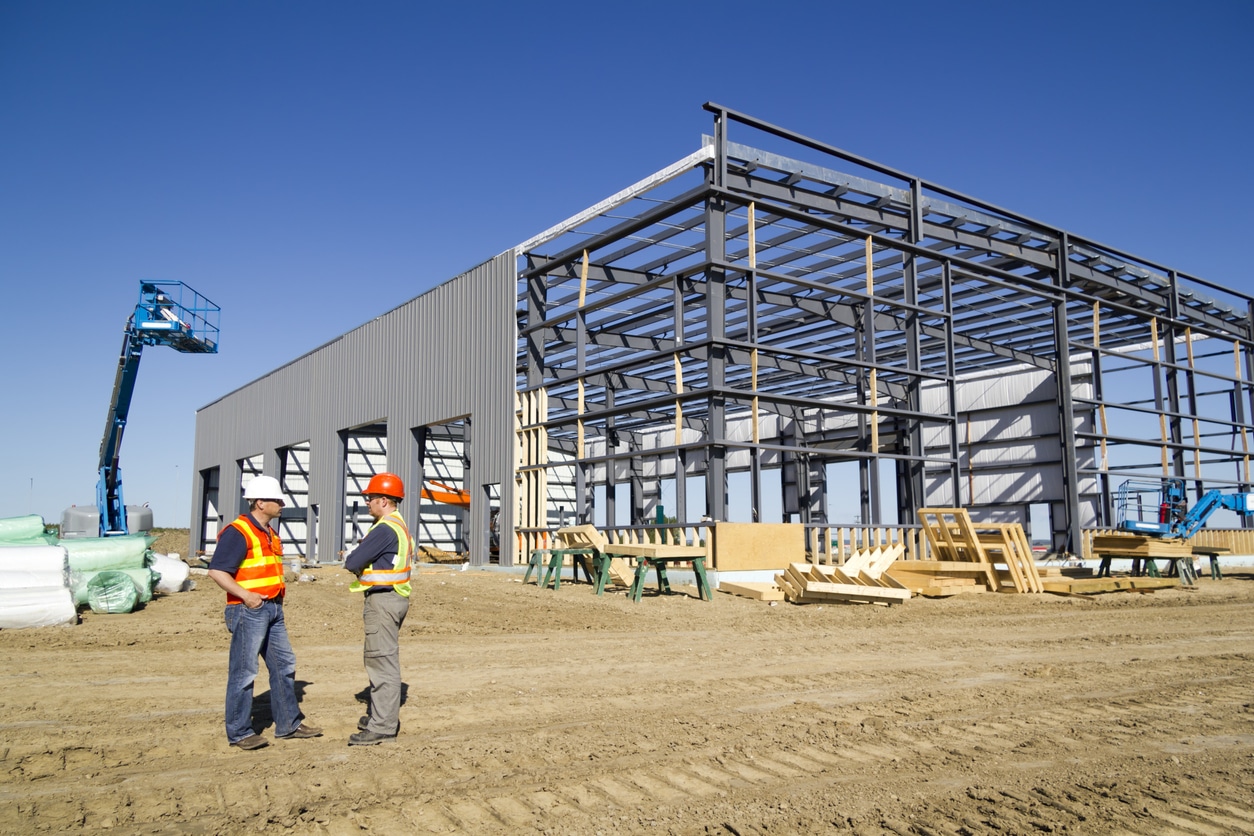Commercial construction projects are complex endeavors that face several challenges, from planning and zoning to…

Permitting is a pivotal yet often challenging aspect of commercial construction, acting as the link between concept and structure. It’s a process that ensures projects meet local, state, and federal regulations, safeguarding public safety, and environmental standards. However, the complexity and variability of the permitting process can significantly impact project timelines and overall success.
In this guide, we’re going to take a good look at permitting in commercial construction. We’ll dig into the process, and provide insights, tips, and actionable strategies to ensure your project can be completed in a streamlined and efficient manner.
A Closer Look at the Permitting Process
The permitting process in commercial construction is a critical step that ensures all aspects of a project comply with local, state, and federal regulations. It’s designed to uphold safety standards, environmental protections, and community guidelines, making it an indispensable part of the construction lifecycle.
Why are Permits Needed?
Permits act as official approvals from relevant authorities, allowing construction projects to proceed within legal and regulatory frameworks. They cover various aspects of construction, including structural integrity, zoning, accessibility, fire safety, and environmental impact.
Common types of permits include:
- Building Permits: These are the most fundamental permits required for new constructions, renovations, and major alterations, ensuring that the project plans comply with building codes.
- Land-Use and Zoning Permits: These permits address the suitability of the project for its intended location, adhering to local zoning laws that govern land use.
- Environmental Permits: Depending on the project’s scope and location, environmental permits may be necessary to protect natural resources and comply with environmental regulations.
What is the Permitting Process?
Anyone looking into potential construction, specifically commercial construction, will often wonder what exactly goes into the permitting process. Typically, it will start with the submission of detailed project plans and documentation to the local building department or regulatory authority.
These documents are reviewed to ensure they meet all applicable codes and standards. The complexity of the review process can vary significantly based on the project’s size, type, and location, often requiring revisions and additional documentation.
Getting through the permitting process successfully and with as few delays as possible requires a substantial understanding of the regulatory landscape, attention to detail in preparing submissions, and often, a degree of negotiation and adaptation to meet regulatory requirements.
Experienced commercial contractors play a crucial role in this process, leveraging their knowledge and expertise to facilitate smooth permit acquisition.
How Do You Navigate Regulatory Landscapes?
Navigating regulatory landscapes can be a real headache that causes delays if all compliances aren’t met. Here are seven tips for streamlining the permitting process so that it is as painless as possible:
- Start Early and Plan Thoroughly: Begin the permitting process as early as possible in the project’s lifecycle. Early engagement allows for ample time to address any potential issues and avoids last-minute rushes that can lead to mistakes or oversights. Thorough planning and preparation of all necessary documentation can also streamline reviews and approvals.
- Understand All Requirements: Be sure you have a comprehensive understanding of all permitting requirements for your project. This includes not only the main building permits but also any specialized permits related to zoning, environmental impact, and other local ordinances. Knowing exactly what is required can help avoid delays caused by incomplete applications.
- Leverage Pre-Submission Consultations: Many regulatory bodies offer pre-submission consultations. Taking advantage of these opportunities allows for preliminary feedback on your project plans and can highlight any areas that may require adjustment before formal submission, saving time in the review process.
- Keep Organized and Detailed Documentation: Ensure that all application materials and documentation are organized, detailed, and clear. High-quality, complete submissions can reduce the need for additional information requests or clarifications, which can slow down the permitting process.
- Utilize Professional Expertise: Engaging with professionals who have experience in the permitting process, such as architects, engineers, and especially general contractors like Schonsheck, can provide invaluable insights. These experts understand the intricacies of local regulations and can help navigate the process more efficiently.
- Communicate Proactively with Authorities: Establish and maintain open lines of communication with the permitting authorities. Proactive communication can help identify potential issues early, facilitate a collaborative approach to resolving them, and keep the process moving forward.
- Be Prepared for Revisions: It’s not uncommon for the permitting process to require revisions to project plans. Being prepared to make these changes quickly and efficiently can help maintain project momentum.
By implementing these tips, commercial construction projects can navigate the permitting process more smoothly, reducing delays and ensuring compliance with all regulatory requirements. Schonsheck’s expertise in general contracting and their proactive approach to permitting can be a significant asset in streamlining this complex process.
Schonsheck’s Approach to Permitting
Schonsheck’s approach to successfully navigating the permitting process in commercial construction is built on years of experience and a deep understanding of the regulatory landscape. Our methodology combines proactive planning, expert knowledge, and strategic communication to ensure that permits are obtained efficiently and projects move forward without unnecessary delays.
Proactive Planning
From the outset, we meticulously plan and prepare for the permitting phase of each project. This involves a thorough review of all project details and requirements, ensuring that every aspect of the design and construction plan meets or exceeds regulatory standards.
Expert Knowledge
Our teams of professionals possess extensive knowledge of building codes, zoning laws, and environmental regulations across various jurisdictions. This expertise allows them to anticipate potential challenges and address them proactively, minimizing the risk of delays or complications during the permitting process.
Strategic Communication
By establishing positive relationships with local authorities and maintaining open lines of communication, Schonsheck ensures that any issues are promptly addressed and resolved, facilitating a smoother permitting process.
Adapting to Change
Like everything else, the regulatory environment is ever-changing, with new codes, standards, and requirements emerging over time. Schonsheck stays abreast of these changes, continuously monitoring the regulatory landscape and adapting project plans as necessary to remain in compliance.
Partnering with Schonsheck for Permitting Success
The world of commercial construction permitting can be intensely complex, but trusting Schonsheck to handle your next construction project ensures that you’ll face minimal delays and maximum efficiency when navigating the commercial construction permitting process.
Schonsheck – Leading General Contracting in Wixom Michigan
Don’t leave your permitting needs to chance. Choose Schonsheck to navigate the complexities of permitting, and transform regulatory challenges into stepping stones for your project’s success. Reach out online, or call us at 248-985-7016.



